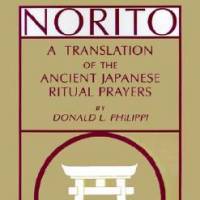The norito (ritual prayers) found in the 10th-century "Engi-shiki" ("Procedures of the Engi Era") have fascinated Japanologists for over a century. In the introduction to his 1878 translation of the norito, Ernest Satow suggested that they could offer insight into "the rites practiced by the Japanese people before the introduction of Buddhism and Chinese philosophy." More recently, they have also attracted attention from linguists interested in the earliest attested stages of the Japanese language.
Norito, Translated by Donald L. Philippi
136 pages
Princeton University Press, Nonfiction.
Donald L. Philippi's "Norito: A Translation of the Ancient Japanese Ritual Prayers," originally published in 1959, walks a line between literal fidelity and readability that will be familiar to readers of his translations of the "Kojiki" or Ainu yukar (folk tales), which are both sadly out of print. In particular, Philippi's use of indent levels to show parallel and nested phrases makes it so easy to grasp the intricate structures involved that compared to the unbroken paragraphs of the original this translation almost feels like cheating.
The 1990 edition from Princeton University Press contains a preface by religious historian Joseph Mitsuo Kitagawa that is well worth reading in its own right. Kitagawa argue for a view of the prayers as a product of the early Japanese state as it "came under the massive influence of Chinese civilization and Buddhism."
Read archived reviews of Japanese classics at jtimes.jp/essential.



